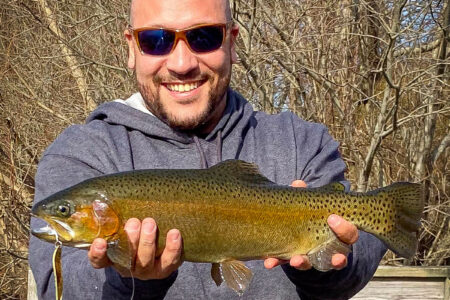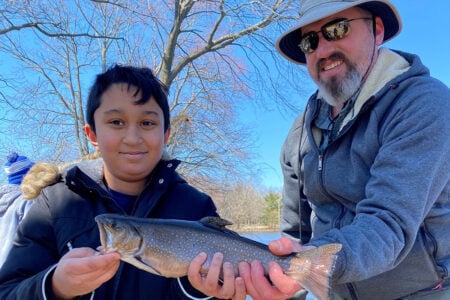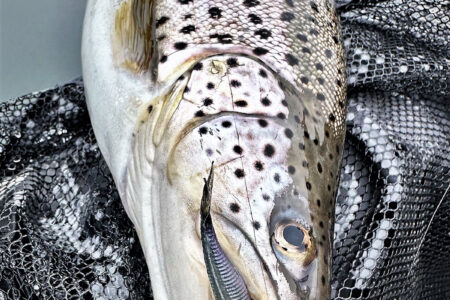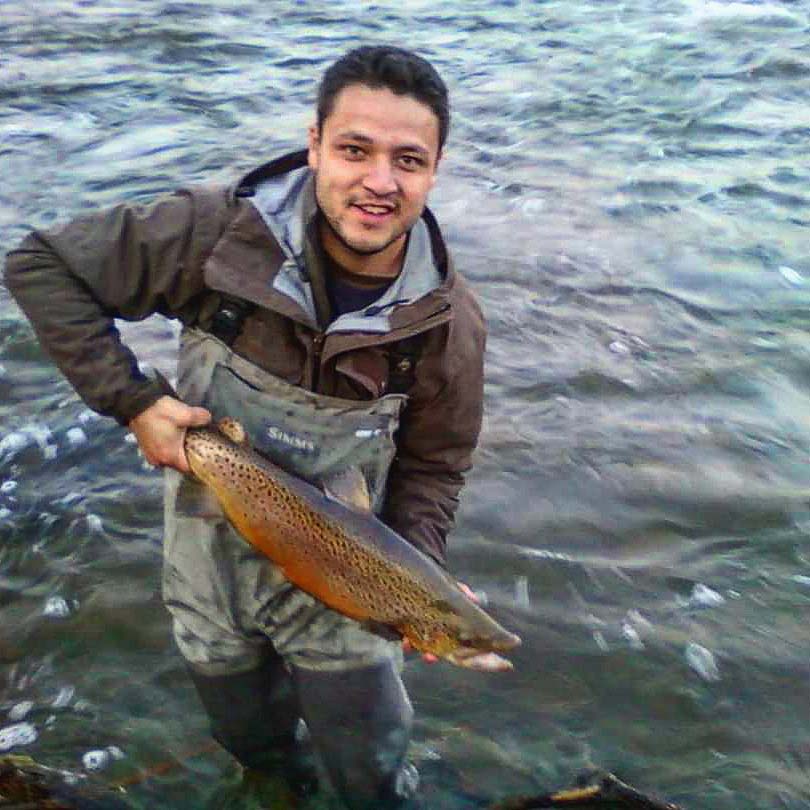
I’m here to tell you however that some spectacular trout fishing also takes place in the fall.
November is a great time to be fishing here in the northeast. By now most if not all of our coastline among the Long Island area is experiencing the peak of the fall run with striped bass, bluefish, and the last remnants of false albacore making their migration down south. To us living in New York that means heading down to your local beaches or planning a trip on a boat to chase some stripers before they’re gone for good.
What is often overlooked amidst the chaos that ensues however are the great trout fishing opportunities that are taking place right under our noses. To most people living in our neck of the woods, trout fishing is often associated with early spring when the stocking trucks come rolling through. I’m here to tell you however that some spectacular trout fishing also takes place in the fall. Hooking either brown, brook, or rainbow trout usually all colored up from spawning (with the exception of rainbows) on a scenic river vibrantly displaying the season’s change is more than the price of admission in my opinion.
Often flying under the radar, trout fishing in New York seems to pick up momentum around Halloween and the fall bite usually lasts until the lakes and rivers start to freeze up for good. Whether it’s staying local to pick some stockies at a neighborhood pond, finding some solitude among the fall foliage, or possibly trophy hunting for a fish of a lifetime, there are more than enough reasons to keep the freshwater gear and fly tackle handy on a moment’s notice. If however you might need a little more convincing we’ll start by picking apart some of the state’s fishiest regions for catching some trout this fall, then dive into what makes each area unique and special.
Looking Local
So it may be hard to pry most anglers (myself included) away from the local saltwater scene this time of year but give it a go and you’ll see what I mean. As stated before, most people are attempting to get their last licks in on the good striped bass fishing happening all over Long Island before the cold grip of winter settles in. With that being the case, it more often than not opens up our lakes and ponds to seeing less traffic in terms of angling pressure. Add in the fact that the NYSDEC supplements our region with two rounds of stocked fish in the fall, and you have plenty of options to choose from when looking to catch a few fish near home.
With a good portion of our lakes and ponds getting a healthy dose of stocked fish, it’s the perfect time to divide up the saltwater scene for a little freshwater variety. Much like targeting trout in the spring, keeping your gear simple will be more than enough to get the job done. Personally I’d stick with a 5- to 6-foot ultralight spinning rod with matching reel and light line in the form of 2- to 4-pound test mono. Most if not all of the standard trout offerings will work here with my choices leaning towards small spinners and spoons in either silver or gold, and be sure to bring a few small hooks along with some dough or worms for when the fish get picky. Be sure to pack the fly rod too as it can be a really fun way to mix up your fishing. Again standard flies such as hare’s ears, pheasant tails, copper johns, and wooly buggers will all work, but don’t be afraid to throw a big bright steamer or two in your box as well.
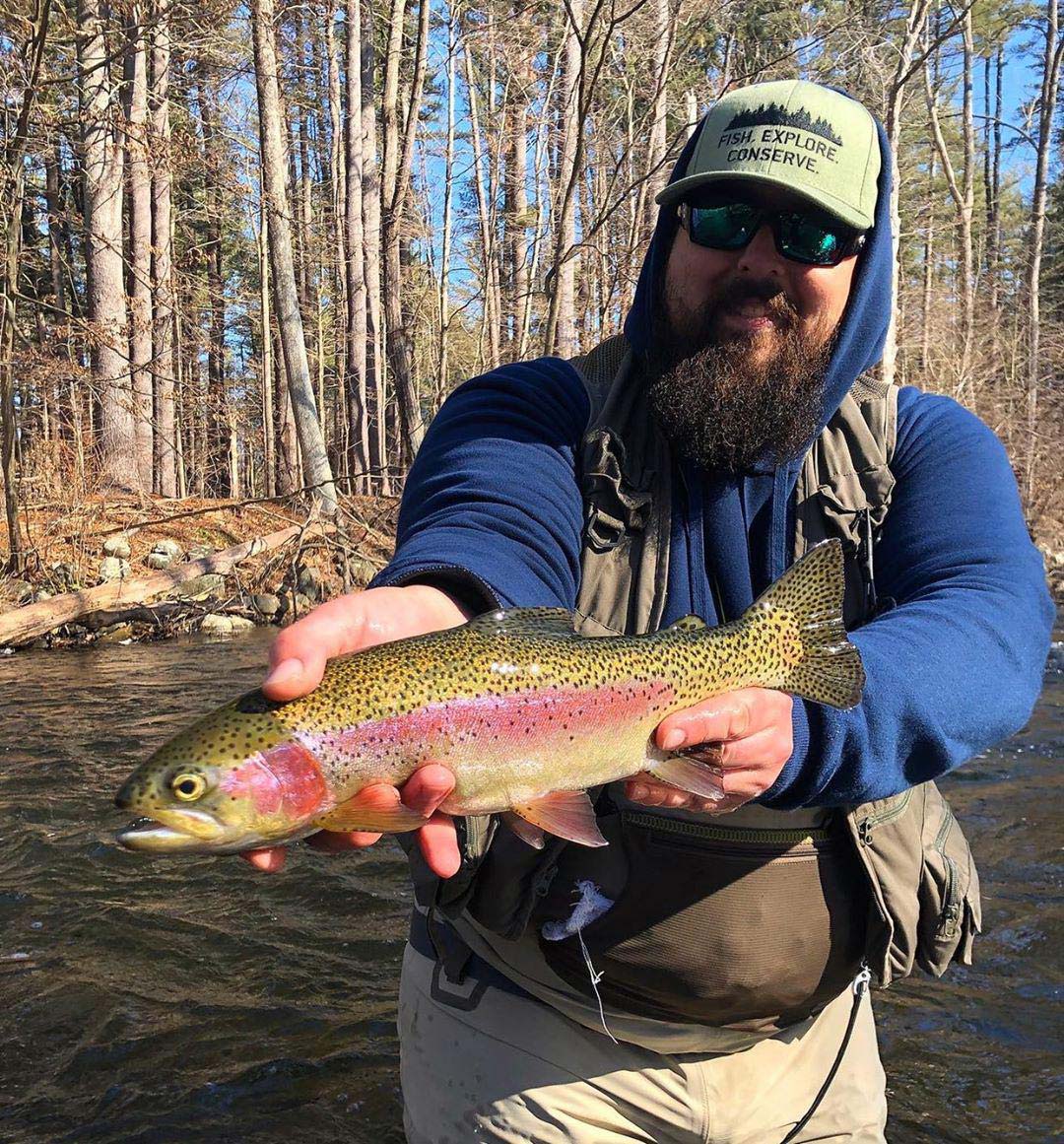
All of the fish stocked by the state in the fall are brown trout and stocking occurs from Nassau County all the way throughout Suffolk much like the spring. Head on over to the NYSDEC website (www.dec.ny.gov) for a full list of what bodies of water will be stocked and when. I personally like to target these fish a few days to a week after a stocking when the fish have settled in and start acting a little more like real fish. Also keep in mind that a lot of our lakes and ponds still have some weed growth this time of year so try and fish your lures higher in the water column or concentrate your efforts along the edges and seams of the deeper holes. Most of the trout you shall encounter here will range anywhere from 8 to 12 inches with a few being slightly larger in the 14- to 16-inch class.
If the state stockies don’t seem like your cup of tea however and its quality you’re interested in over quantity, giving the Connetquot river system a try is never a bad idea. This is a fly fishing only establishment, with a pay to play type of fishing. The cost to fish the park is $25 and you must reserve a beat or section of river in advance to fish it. Again all the flies I’ve mentioned earlier will work very well in the park and although you may not hook a ton of fish like you might on a freshly stocked pond, it’s really the quality size of the trout that make this venture worth exploring. You’ll find almost all the fish here to be either brook trout which range anywhere from 8 to 16 inches, or the highly sought after big rainbows. I consider the rainbows to be the true jewel of the park in that they are a little harder to fool but well worth the effort. Many of these fish run from 16 to 25 inches and within the past few years I’ve seen more than a few that have stretched the tape a little longer.
Make sure to bring with you a pair of waders and a fly rod ranging anywhere from a 4- to 6- weight to handle some of the larger fish should you connect with one. While fishing stocked ponds and the famous Connetquot are great options for those looking for a quick fix, just a short distance away from the city opens up even more opportunity. While our local options do receive less pressure in the fall than they do in the spring, they aren’t completely void of anglers no matter what time of year it may be so keep that in mind if it’s more breathing room you’re looking for. Not to worry however because a short drive just north of the city provides just that.
Solitude In The Foliage
Continuing on our journey lands us in a very scenic portion of NYS called the Catskill mountain range. Nestled within the area are a few river systems that are equally stunning in beauty as they are productive fishing wise. Probably the most well-known destinations among the larger rivers in the area consists of the famous Beaverkill River and the Willowemoc located nearby. Personally most of my experience within this area consists of fishing either the Beaverkill or Willomec near the town of Roscoe, NY. I included these rivers in our discussion because they offer literally miles and miles of fishable water open to the public that really seems to turn on once the water levels rise a bit and the temperature starts to drop.
If you’re looking for somewhere that has some awesome scenery with the leaves changing along with plenty of wadable water to fish without bumping into many other anglers, this is the right place to be. You may have to put some time in on these rivers to really learn how to fish them properly because the fish can be a bit tricky to figure out, but learning how to read the water will help to guide you in the right direction. Generally speaking I start from the bank and work out from there fishing the edges of current seams, eddy’s forming behind boulders, and any deeper pool or run I happen to stumble upon. Pay particular attention to the edges of areas where fast water meets the slow in that this is where the majority of my strikes will come from.
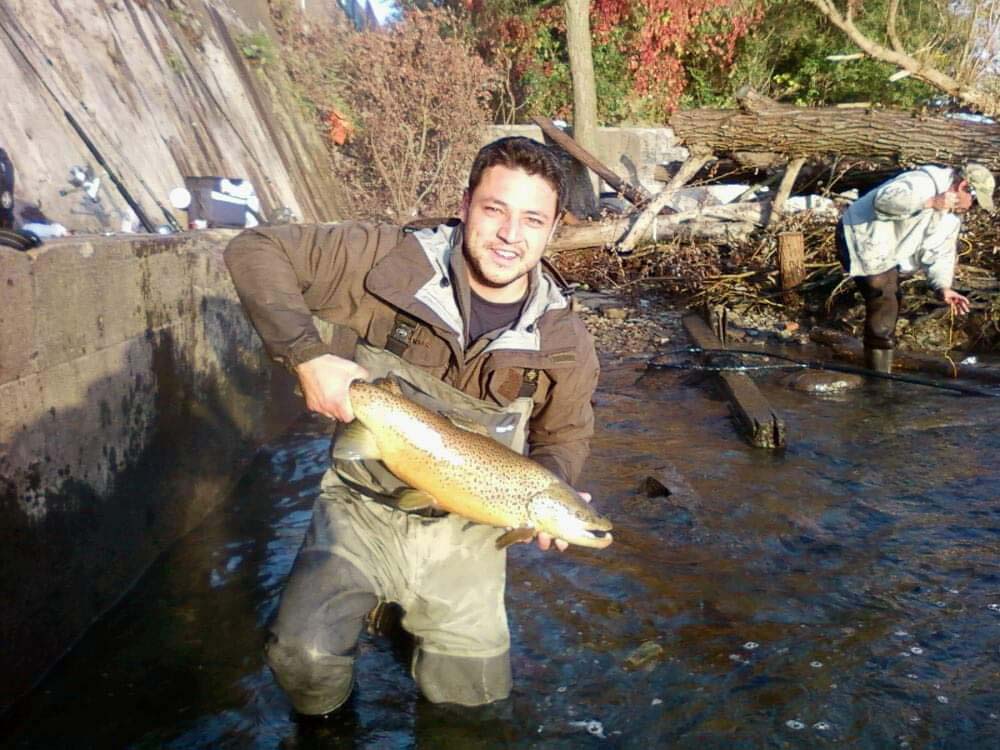
While there is some stocking that occurs on these rivers, most of these fish will be wild with a good majority of them being brown trout. Rainbows make their presence known on some occasions and I typically find them more in the faster runs that are well oxygenated. I personally only fly fish these rivers, but a 6-foot ultralight spinning rod along with a few spinners, spoons, and small Rapalas will work equally as well. Be sure however to make sure you check the regulations before fishing because not all areas on these rivers allow spinning tackle.
For fly fishing I will opt for a 9-foot, 4-weight setup matched with a sink tip floating line. Fly choices vary but personally I’ve done very well throwing small dark stonefly patterns along with some caddis imitations in sizes ranging anywhere from 14 to 22 inches. Also watch for hatches to occur and keep a variety of dry flies on you if it does happen. Keep your flies small, adjust your strike indicator when nymph fishing according to the run or hole you’re fishing, and keep your leaders light. I always use a long length of 4-pound fluorocarbon attached to my leader and sometimes scale down to 2-pound as these fish can sometimes get very line shy.
Throughout the region there are a few fly shops and my advice to anyone fishing this area for the first time would be to call or stop in to a local shop first before you head out. Ask the locals what hatches may be present and pick up a few flies based on what they tell you, trust me it’ll save you a lot of guesswork. Check the water flow before you plan on making the trip, and the best fishable water will be somewhere between not blown out after a big rain but also not extremely low, meaning somewhere in the middle. Check the regulations before you head out to fish and make sure the area you intend on fishing is still open for the season. Generally speaking for the most part the season runs from April 1 through November 30, but some sections are open year round. While breathtaking fall scenery might be nice, just a little further north is where I’d consider the heart and soul of New York’s trout fishing to be. Here we find the opportunity to hook a fish of a lifetime.
Big Lake, Big Fish
The last region I chose to put a great deal of emphasis on focuses on a few tributaries dotted along the southern shoreline of Lake Ontario. Three river systems including the Salmon River in Pulaski, the Oswego River in Oswego, and the Oak Orchard near Rochester I consider the meat and potatoes when thinking about fall trout fishing in NYS in the sense that these rivers hold some real trophy sized fish. If there was ever a place within driving distance of Long Island hosting a fishery that might be on par with destinations located thousands of miles away for true trophy sized trout, this is it!
Big lake run browns and steelhead following the fall salmon runs are the main focus for anglers and for good reason. So how big do these fish get? Well, personally the largest brown trout I’ve ever hooked (an honest 12.5-pound fish) was caught here, and I’ve also landed a few more that weren’t too far off in size. Generally speaking however most of the browns you may encounter will fall in the 3 to 6 pound category with a few brutes (7 pounds or larger) usually making themselves known. Mix in steelheads, some of which will push the scale to 15 pounds during a good season, and you’ve got yourself a world class fishery located just a few hours away from home.
Before we go any further, I do have to mention that all three of these river systems attract a lot of attention from anglers from all over the northeast so don’t expect to find much solitude here. Fishing these rivers essentially encompasses “combat fishing” with many anglers lining a good run or stretch of water. If this doesn’t deter you however, plan on getting up very early (aka in the dark before dawn) to secure a good spot on the river and be patient. Fishing can be slow one minute and start to light up the next so plan on being there all day to make the best out of your trip. Also like most big rivers along this region, water flow levels are very important in how many fish will enter these rivers. Flow charts can be found online and usually a day or two after a good rain as the water starts to recede are great times to fish.
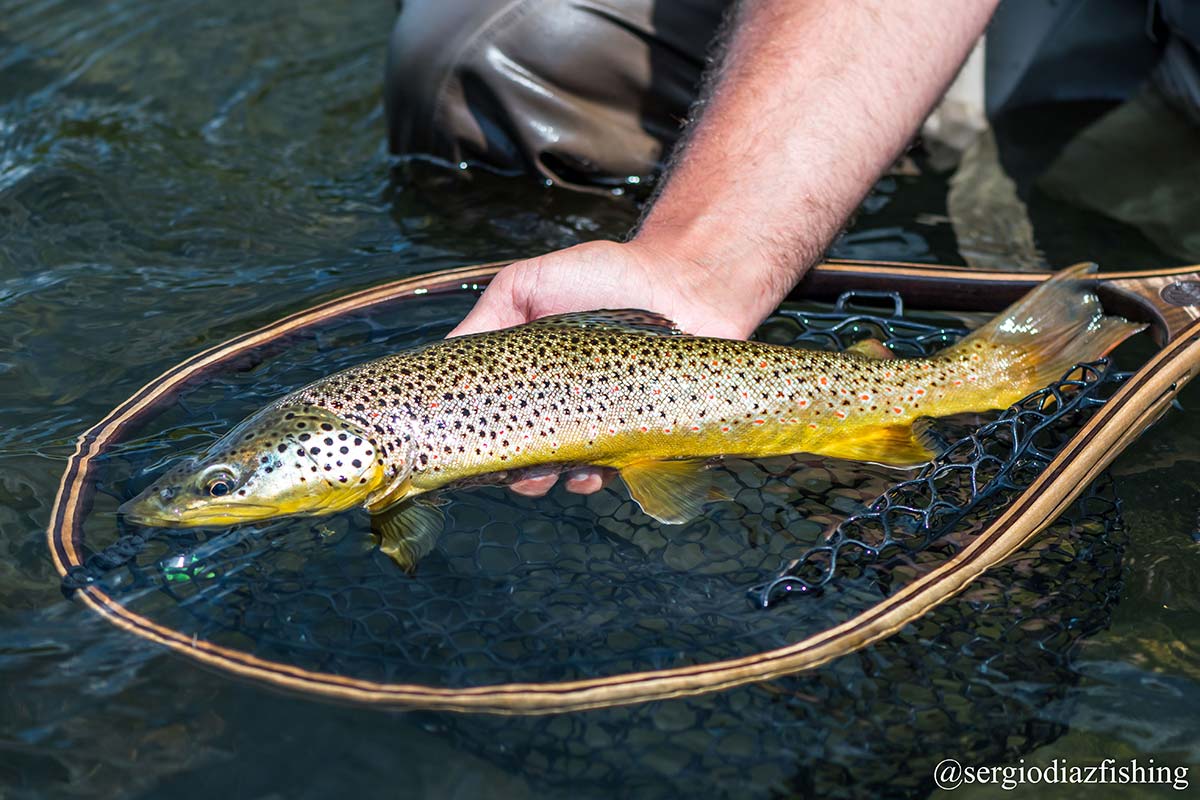
As far as tackle is concerned, I’d leave the small stuff at home. These rivers are large, wide, and have a lot of current. If fishing with spinning tackle I’d suggest a 9-foot medium to medium/light noodle rod with a matching reel spooled with 8- to 10-pound mono. The longer length of the rod allows you to fish the faster runs and holes effectively while having enough give to not break the light leader you will be using. For fly tackle I’d bring setups ranging from 9 to 10 feet in length in weights ranging from 7 to 9. Again the trout hooked here are rarely small so matching your setup is crucial in landing any fish you may hook. As far as terminal tackle is concerned, have a few spools of fluorocarbon handy with sizes ranging anywhere from 4- to 8-pound test, along with some small octopus hooks in sizes 4 to 8 along with plenty of split shot.
The big trout here essentially enter these rivers following the salmon to eat their eggs once they drop them, therefore your tackle and rigging should follow suit. Fishing consists of either bottom bouncing salmon egg sacks with a split shot rig or floating egg sacks on a slip bobber. For fly fishing drifting egg sack tied patterns and or swinging brightly colored streamers definitely seem to be the number one choice. Color can vary from week to week and even day to day so you might have to experiment a bit but time tested and true colors to stick with are pink, orange, white, chartreuse, blue, and yellow. Again keep your leader and tippet light in that these fish can be a little line shy at times. Be sure to stop in one of the various tackle shops (I’d highly recommend Fat Nancy’s in Pulaski next to the Salmon River) for any tackle you may have forgotten, checking the daily water flow, and grabbing some fresh egg sacks.
The last piece of advice I can offer that will work for all three of these rivers is to look for any remaining spawning salmon if possible. Like I stated before, the trout are there to eat eggs so in my experience, they’re never far away from the salmon. Casting behind salmon has rewarded me with my biggest brown trout and steelhead to date so keep that in mind when fishing these waters. If you do happen to hook up, let others around you know because these fish have a tendency of peeling a ton of line in a short manner of time so be ready to maneuver either up or down the river among a group of anglers in a short period of time. With that being said also don’t forget either studded boots or a pair of Korkers because I can tell you from personal experience, the rocks are very slippery and the water in November is very cold.
So there you have it, a look at some great trout fishing opportunities anywhere from close to home to an upstate long weekend getaway. If you are able to get into a few fish no matter where you are, I’d strongly recommend practicing catch and release in that we hope to see these fisheries alive and well for many years to come. As always don’t forget your NYS freshwater fishing license, and be sure to check the regulations of any body of water you intend on fishing before heading out. Every fall when the leaves start to turn, I always try to keep a few days on my calendar open to pursue some of this state’s great trout fishing, and with a little time and the right mindset maybe you will too.
